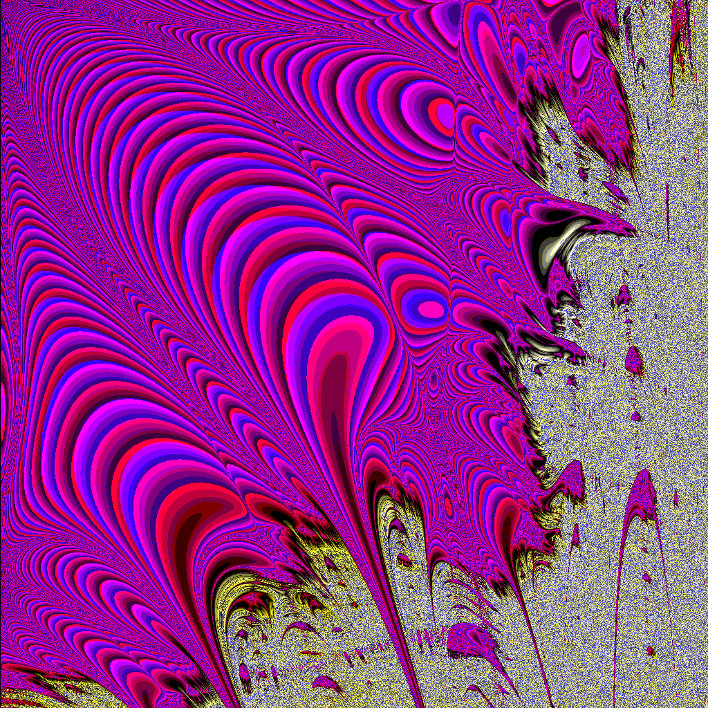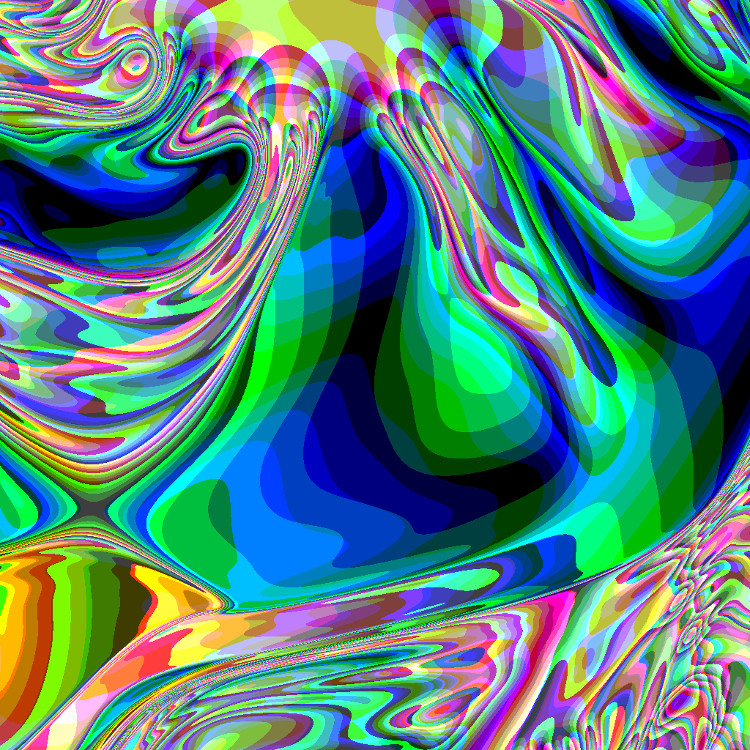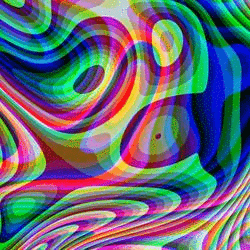The Lyapunov Fractal

The string used to generate this was AABAB and the parameter space was [2,4]x[2,4]. (explanation of string and parameter space here)
With limited code space I thought this colouring was pretty cool.
//RED
float r,s=0,x=.5;for(int k=0;k++<50;)r=k%5==2||k%5==4?(2.*j)/DIM+2:(2.*i)/DIM+2,x*=r*(1-x),s+=log(fabs(r-r*2*x));return abs(s);
//GREEN
float r,s=0,x=.5;for(int k=0;k++<50;)r=k%5==2||k%5==4?(2.*j)/DIM+2:(2.*i)/DIM+2,x*=r*(1-x),s+=log(fabs(r-r*2*x));return s>0?s:0;
//BLUE
float r,s=0,x=.5;for(int k=0;k++<50;)r=k%5==2||k%5==4?(2.*j)/DIM+2:(2.*i)/DIM+2,x*=r*(1-x),s+=log(fabs(r-r*2*x));return abs(s*x);
I also made a variation of the Mandelbrot set. It uses a map similar to the Mandelbrot set map. Say M(x,y) is the Mandelbrot map. Then M(sin(x),cos(y)) is the map I use, and instead of checking for escaping values I use x, and y since they are always bounded.
//RED
float x=0,y=0;for(int k=0;k++<15;){float t=_sq(sin(x))-_sq(cos(y))+(i-512.)/512;y=2*sin(x)*cos(y)+(j-512.0)/512;x=t;}return 2.5*(x*x+y*y);
//GREEN
float x=0,y=0;for(int k=0;k++<15;){float t=_sq(sin(x))-_sq(cos(y))+(i-512.)/512;y=2*sin(x)*cos(y)+(j-512.0)/512;x=t;}return 15*fabs(x);
//BLUE
float x=0,y=0;for(int k=0;k++<15;){float t=_sq(sin(x))-_sq(cos(y))+(i-512.)/512;y=2*sin(x)*cos(y)+(j-512.0)/512;x=t;}return 15*fabs(y);

EDIT
After much pain I finally got around to creating a gif of the second image morphing. Here it is:

